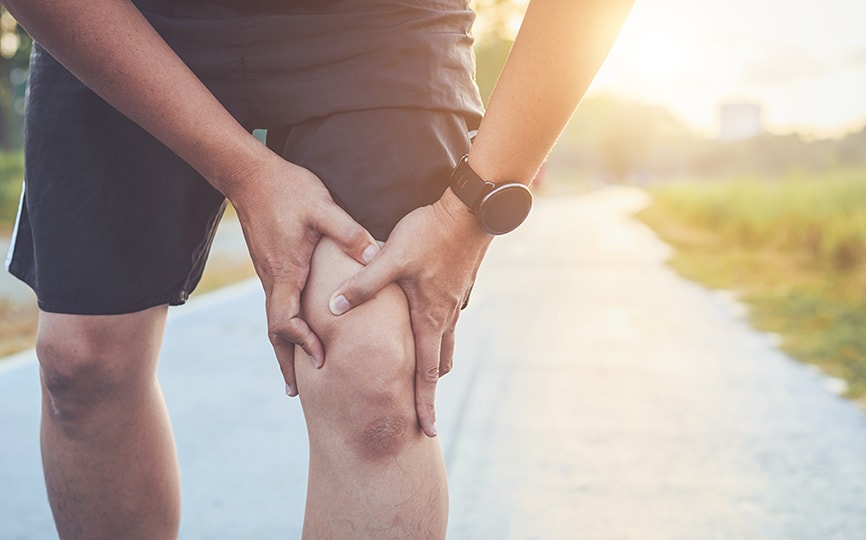We are increasingly hearing terms such as ‘torn discs’, ‘worn joints’, ‘spondylosis’, ‘degenerative joint disease’ and ‘wear and tear’. These, and many other terms are used to describe the condition known as osteoarthritis (OA). This is a condition we once only associated with our parents’ or grandparents’ generation but it’s becoming more of a norm and is increasingly affecting younger people, often in their 20’s.
So, what is OA?
According to the Australia Bureau of Statistics, OA is the most common chronic condition of the joints and is the predominant condition leading to knee and hip replacement surgery.
In normal joints, a firm, rubbery material called cartilage covers the end of each bone. Cartilage provides a smooth, gliding surface for joint motion and acts as a cushion between the bones. In OA, the cartilage breaks down which may lead to pain and swelling. As the condition worsens, growths known as spurs form and fragments of bone and cartilage may dislodge causing them to float around the joint. This ultimately leads to more damage and decreased function of the joint.
OA can affect any joint, however it occurs most often in our hips, knees, lower back and neck, small joints of the hands and the base of the thumb and big toe.
Here are some statistics:
- In 2014-15 , OA affected 1 in 11 Australians, which equates to approximately 2.1 million people
- 2 in 3 people who have OA are female
- 1 in 4 people with OA reported fair or poor health. This was twice the number of people without the condition
- There has been a 29% rise in the rate of total knee replacements performed as a result of OA between 2005-06 and 2014-15.
What causes OA?
The cause of OA is multi-faceted but it can be broken down into two main categories, structure and lifestyle.
Structurally, previous injury or trauma has been shown to speed up cartilage breakdown. However, recent research is suggesting that lifestyle factors are a greater concern. A study conducted by Harvard University has revealed that the prevalence of OA in the knee has doubled since the mid 20th century. This study suggests that it isn’t because we’re living longer but is due to a decline in physical activity. This lack of activity combined with an increasingly overweight population means that OA is a larger problem today than it has ever been. The research, while alarming, is also significant in a positive way, as it offers us a preventable risk factor we can address.
So what can we do about it?
Move more! Even relatively minor activities can make a big difference. For example, taking the stairs, parking your car further away, going for a walk at lunchtime, walking to school or cycling with the kids. This is what’s known as Non-Exercise Activity Thermogenesis (NEAT) or Non-Exercise Physical Activity (NEPA). Both have been shown to be an essential tool for weight control. Ultimately, the more you move, the more calories you’ll burn and the risk of developing OA improves. If you already have OA, making these small changes can significantly enhance the management of your condition.
Certain supplementation and dietary changes are also considered to be beneficial in the prevention and management of OA. A well designed study published in the Journal of the American College of Nutrition in 2007 looked at 90 people with cardiovascular disease and OA. They were given a supplement of 300mg of Omega 3 oil per day and after a brief treatment time of 7 and 14 days, the patients showed a significant reduction in inflammation and arthritic conditions.
Curcumin is another fantastic natural supplement that can help reduce inflammation in the body. Curcumin is a naturally occurring chemical compound found in the spice Turmeric. Clinical studies have shown that when compared to other anti-inflammatories, a curcumin supplement can help patients suffering from mild to moderate knee OA double their walking distance. The group taking this supplement were also able to significantly decrease their drug use, side effects, hospitalisation and other treatments.
More than half of my career has been in dealing with an ageing community. Many of my over 50 year old patients had OA as a result of being overweight and physically less active. Personally, I found that a combination approach helped the most. Supplementing with Omega 3 and Curcumin, daily mobility exercises and changing their diet, produced the best results in managing pain. This gave patients the opportunity to engage in more activities such as walking and even chasing after their grandchildren!
It takes a while for OA to form and make its symptoms known. But by making smarter health and lifestyle choices, we’re in a better position to prevent the condition from occurring at all. If you’ve already got OA, don’t worry, good natural management is within our control to offer long term benefits for your body.


Leave A Comment
You must be logged in to post a comment.